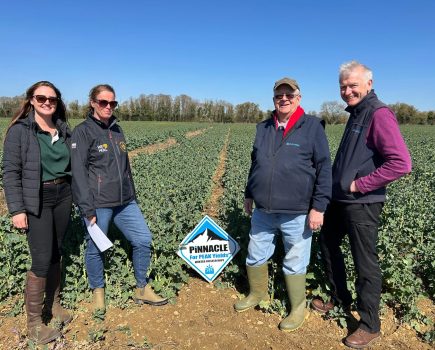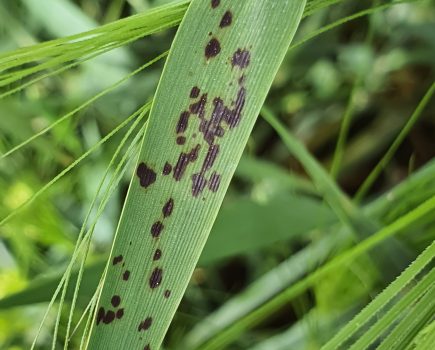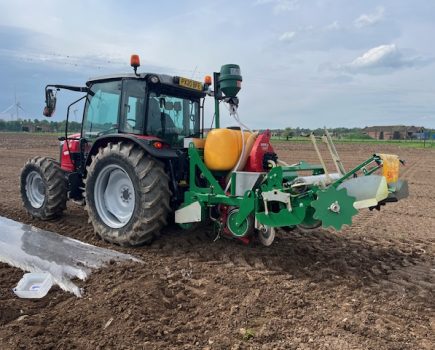With a large area of wheat sown relatively early and some high biomass crops coming out of winter, disease risk could be relatively high approaching the important T1 fungicide, according to Hutchinsons agronomist James Boswell.
“While colder conditions in many areas during February and early March slowed disease development, relatively few places experienced the extremes of cold needed for a significant reduction in inoculum,” James Boswell commented..
“February was quite cool and dry in general, but many places still saw intermittent rain, which helped keep Septoria and yellow rust ticking over on older leaves in the base of some crops. At the moment, at least, pressure still looks relatively high.”
A T0 fungicide, often focused on yellow rust, will have helped manage early pressure, but it is vital to continue monitoring crops closely so T1s can be adapted to the situation on the ground. James also recommends growers consider the risk factors they cannot see, and avoid being lulled into a false sense of security if disease pressure appears low.
“We have seen before how quickly Septoria and yellow rust can take off from a seemingly low base if/when conditions are conducive, so spray programmes must insure against the ‘hidden’ risks, as well as what we can see.
“For Septoria, drilling date has a big influence on underlying risk, and even if little disease is visible, it is hard to know how much is in the latent phase yet to express itself,” he added.
Conversely, yellow rust is generally favoured by later drilling, although this is a very dynamic pathogen, which also makes disease risk hard to predict. “We are seeing more new races able to infect crops earlier, cycle faster and potentially erode genetic resistance.
“The T1 fungicide, as with other treatments, provides a valuable insurance policy against hidden risks, while controlling any disease that has started establishing within crops and helping to manage the overall level of inoculum carried through to T2.”
Timing is everything
Traditionally, T1 fungicides are applied around growth stage 32, but it is important to ensure target leaf three is fully emerged before treating, which usually occurs between GS 31-33. “This can only really be identified with careful plant dissection, so don’t rely on calendar date.”
Two years ago, cool, dry conditions in April slowed crop growth, resulting in some T1s going on too early in cases where growers focused more on calendar date than crop development, he noted. This compromised coverage of leaf 3 and meant spray intervals to the flag leaf application were stretched just as disease pressure surged following rain in April and May.
“Many older actives lack the curative ability they once did, so an adequate T1 is essential to avoid putting undue pressure on later applications by expecting them to control high levels of disease inoculum. This is particularly important for resistance management and protecting the future of key actives.”
Product choices
Septoria is generally the focus of T1s and recent years have seen a gap develop in the potency of new chemistry such as fenpicoxamid + prothioconazole, or fluxapyroxad + Mefentrifluconazole over older SDHI/azole fungicides.
For curative Septoria control, James favours newer chemistry, although SDHI/azole products such as bixafen and Fluopyram + prothioconazole have been effective in trials where timed well in protectant situations.
“The challenge is identifying whether situations are truly protectant or curative, especially if disease is still in the latent phase, so close inspection and assessment of all risk factors is fundamental.”
Where rust control is required, benzovindiflupyr + prothioconazole remains the best option, while strobilurins could be included at T1 as a protectant strategy against rust.
There were variable responses from including folpet last year, possibly reflecting the conditions, but long-term experience shows the multisite chemistry is a good addition to programmes, helping manage Septoria risk, providing some effect on rust and for resistance management.
“With highly diverse isolates of Septoria and rust, it is hard to know how they will respond to fungicide chemistry, so using multiple modes of action ensures a greater chance of success and helps safeguard products for the future,” James concluded.
For more like this, sign up for the FREE South East Farmer e-newsletter here and receive all the latest farming news, reviews and insight straight to your inbox.







